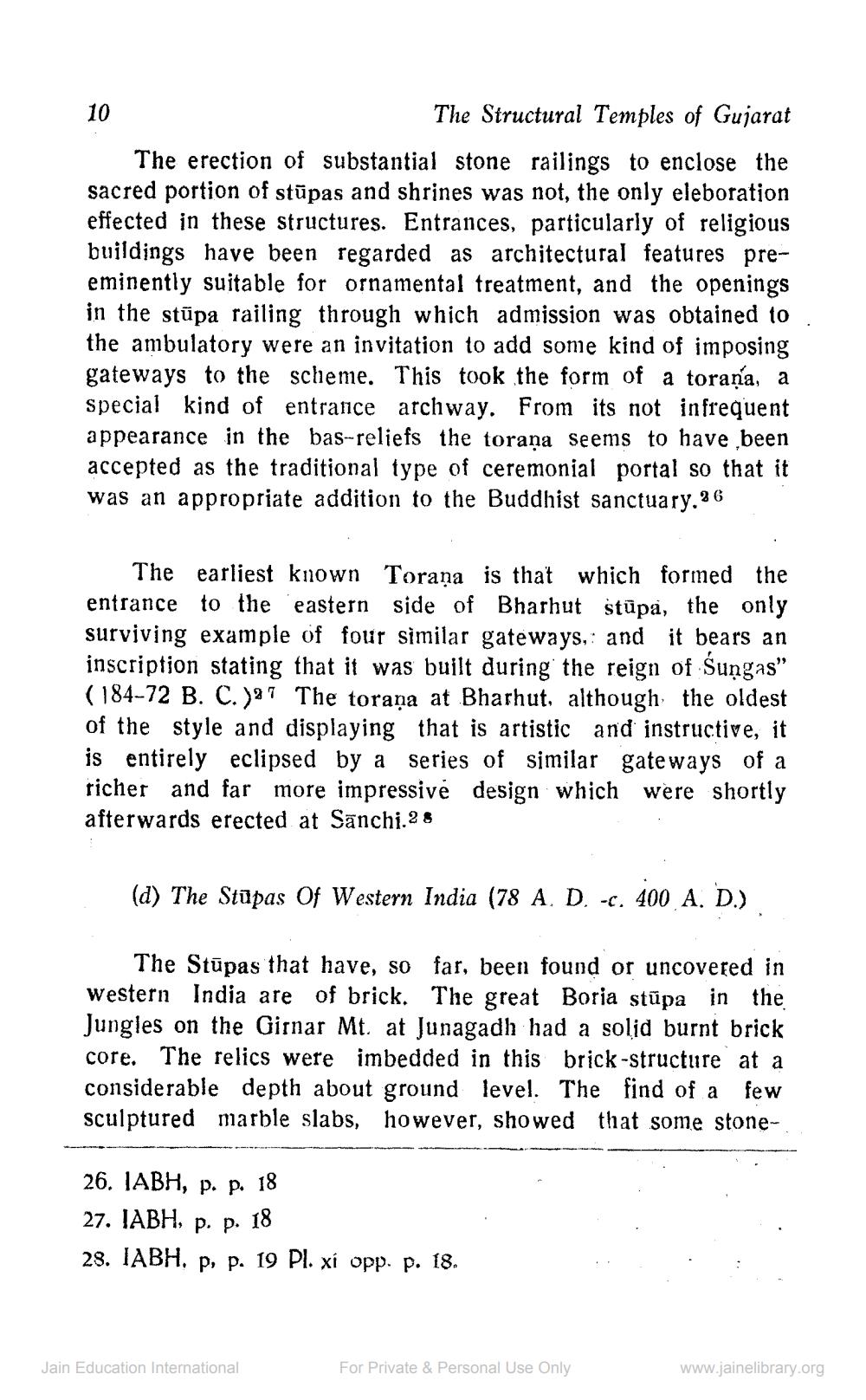________________
10
The Structural Temples of Gujarat The erection of substantial stone railings to enclose the sacred portion of stūpas and shrines was not, the only eleboration effected in these structures. Entrances, particularly of religious buildings have been regarded as architectural features preeminently suitable for ornamental treatment, and the openings in the stūpa railing through which admission was obtained to the ambulatory were an invitation to add some kind of imposing gateways to the scheme. This took the form of a torana, a special kind of entrance archway. From its not infrequent appearance in the bas-reliefs the torana Seems to have been accepted as the traditional type of ceremonial portal so that it was an appropriate addition to the Buddhist sanctuary.36
The earliest known Torana is that which formed the entrance to the eastern side of Bharhut stūpa, the only surviving example of four similar gateways, and it bears an inscription stating that it was built during the reign of Sungas" (184-72 B. C.)27 The toraņa at Bharhut, although the oldest of the style and displaying that is artistic and instructive, it is entirely eclipsed by a series of similar gateways of a richer and far more impressive design which were shortly afterwards erected at Sanchi.28
(d) The Stūpas Of Western India (78 A. D. -C. 400 A. D.)
The Stūpas that have, so far, been found or uncovered in Western India are of brick. The great Boria stūpa in the Jungles on the Girnar Mt. at Junagadh had a solid burnt brick core. The relics were imbedded in this brick-structure at a considerable depth about ground level. The find of a few sculptured marble slabs, however, showed that some stone
26. IABH, p. p. 18 27. JABH, p. p. 18 28. IABH. p, p. 19 Pl. xi opp. p. 18.
Jain Education International
For Private & Personal Use Only
www.jainelibrary.org




